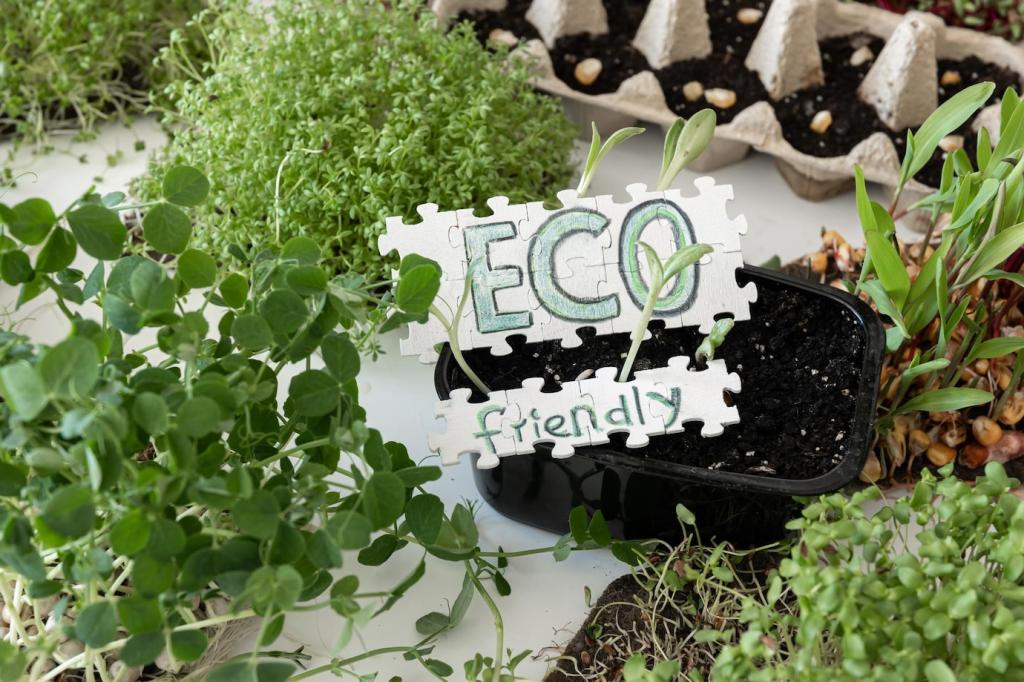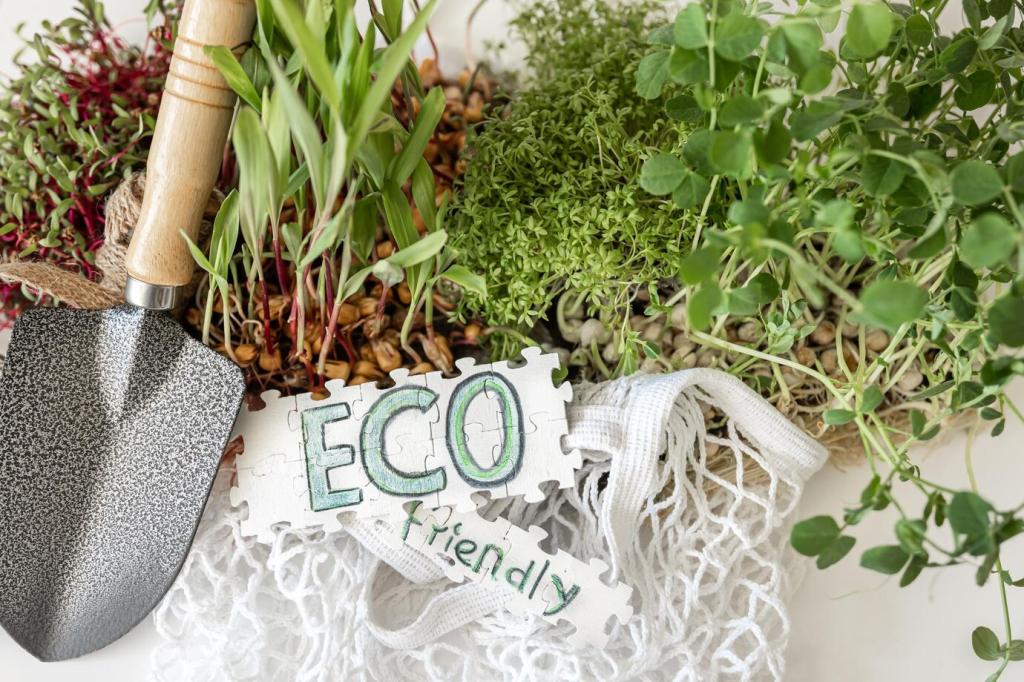Chosen theme: Sustainable Landscaping Practices. Welcome to a home for gardeners, designers, and neighbors who believe landscapes should conserve water, build soil, and shelter life. Last spring, a small front lawn on Birch Street became a buzzing meadow; by summer, bees stitched the air like tiny seamstresses. Join us, subscribe for weekly field notes, and tell us what sustainable change you’re planning this season.
Foundations: Designing with Nature, Not Against It
Native Plants as Living Infrastructure
Native plants are not just ornamental; they are the neighborhood’s life support system. They evolved with local insects, birds, and soils, needing fewer inputs. Share your favorite regional natives in the comments and help others plant a thriving, place-based palette.
Soil Health Is the Hidden Engine
Healthy soil stores carbon, holds water like a sponge, and feeds roots with a buffet of microbial magic. Compost, leaf mulch, and minimal disturbance power this engine. Subscribe for our seasonal soil checklists and join the next soil-building challenge.
Right Plant, Right Place, Right Purpose
Match plant needs to site conditions—sun, shade, wind, and drainage—so you rely less on fertilizers and fuss. This simple principle reduces waste and maintenance. Tell us where you’re stuck, and we’ll crowdsource site-smart plant ideas for your conditions.
Water Wisdom: Conserve Every Drop
Contoured beds, swales, and rain gardens slow runoff, filter pollutants, and recharge groundwater. On Birch Street, one shallow basin turned puddles into a seasonal butterfly bar. Show us your rain-catching designs and inspire neighbors to reimagine downspout destinations.
Drip lines deliver moisture straight to roots, reducing evaporation and weed growth. Pair them with controllers that adjust to rain and temperature. Share your monthly water savings in the thread, and let’s compile real-world data to guide beginners.
Laundry-to-landscape systems can irrigate shrubs and trees with lightly used water. Filter appropriately, choose compatible detergents, and direct flows safely. Ask questions below, and we’ll link resources and experiences to help you implement responsibly and legally.


Pollinator Corridors from Porch to Park
Continuous blooms across seasons are a lifeline for bees and butterflies. Stagger flowering times and keep pesticide-free zones. Post your bloom calendar in the comments, and let’s map a community corridor that stitches yards into a living pathway.

Layered Planting for Year-Round Shelter
Combine canopy, understory, shrubs, perennials, and groundcovers to create structure and refuge. Leaf litter and brush piles matter, too. Share a quick sketch of your layers, and we’ll feature creative microhabitats in next week’s subscriber roundup.

Chemical-Free Care with Integrated Pest Management
IPM starts with prevention, monitoring, and tolerance thresholds before any interventions. Encourage beneficial insects and choose the least disruptive methods. Tell us about your biggest pest surprise, and we’ll troubleshoot together with evidence-based, habitat-safe strategies.
Climate Resilience: Gardens Built to Adapt
Shade trees can lower surface temperatures, protect understory plants, and reduce energy use indoors. Choose long-lived, site-appropriate species and water deeply while young. Share your tree wish list, and we’ll suggest companion understory plantings to amplify cooling.


Reclaimed and Salvaged with Story
Salvaged brick, reused stone, and repurposed timber carry history and cut emissions. Birch Street’s path used century-old bricks from a demolished bakery. Share your best salvage source, and we’ll build a community directory of responsible material finds.

Lower-Carbon Options, Better Wood Choices
Seek cement alternatives, recycled aggregates, and certified wood from well-managed forests. Durable choices reduce replacements and waste. Drop your favorite low-carbon product picks below, and we’ll compare performance in a future subscriber deep dive.

Measure, Celebrate, Improve
Record water use, mulch depth, bloom months, and wildlife sightings. Even small datasets reveal patterns worth acting on. Share a snapshot of your metrics, and we’ll suggest the next two improvements with the biggest impact.
Measure, Celebrate, Improve
Walk your landscape monthly, noting stress, gaps, and successes. Adjust watering, plant replacements, and mulching based on observations. Comment with your latest walkthrough notes, and we’ll assemble a community checklist aligned to seasonal priorities.
Measure, Celebrate, Improve
Pollinator-friendly and sustainability certifications can motivate consistent care and educate neighbors. They also spark great conversations at the fence. If you’ve pursued one, share insights and resources so others can follow your path responsibly and proudly.
